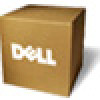Dell B3460dn Mono Laser Printer User's Guide - Page 42
Tips on using letterhead, Tips on using transparencies
 |
View all Dell B3460dn Mono Laser Printer manuals
Add to My Manuals
Save this manual to your list of manuals |
Page 42 highlights
Paper and specialty media guide 42 When printing on labels: • Use labels designed specifically for laser printers. Check with the manufacturer or vendor to verify that: - The labels can withstand temperatures up to 240°C (464°F) without sealing, excessive curling, wrinkling, or releasing hazardous emissions. - Label adhesives, face sheet (printable stock), and topcoats can withstand up to 25‑psi (172‑kPa) pressure without delaminating, oozing around the edges, or releasing hazardous fumes. • Do not use labels with slick backing material. • Use full label sheets. Partial sheets may cause labels to peel off during printing, resulting in a jam. Partial sheets also contaminate the printer and the cartridge with adhesive, and could void the printer and toner cartridge warranties. • Do not use labels with exposed adhesive. • Do not print within 1 mm (0.04 inch) of the edge of the label, of the perforations, or between die‑cuts of the label. • Make sure the adhesive backing does not reach to the edge of the sheet. Zone coating of the adhesive should be at least 1 mm (0.04 inch) away from edges. Adhesive material contaminates the printer and could void the warranty. • If zone coating of the adhesive is not possible, then remove a 2‑mm (0.06‑inch) strip on the leading and driver edge, and then use a non‑oozing adhesive. • Portrait orientation is recommended, especially when printing bar codes. Tips on using letterhead • Use letterhead designed specifically for laser printers. • Print samples on the letterhead being considered for use before buying large quantities. • Before loading letterhead, flex, fan, and straighten the stack to prevent sheets from sticking together. • Page orientation is important when printing on letterhead. For information on how to load letterhead, see: - "Loading trays" on page 28 - "Loading the multipurpose feeder" on page 32 Tips on using transparencies • Print a test page on the transparencies being considered for use before buying large quantities. • Feed transparencies from the standard tray, or the multipurpose feeder. • Use transparencies designed specifically for laser printers. Transparencies must be able to withstand temperatures up to 185°C (365°F) without melting, discoloring, offsetting, or releasing hazardous emissions. Note: If the transparency weight is set to Heavy and the transparency texture is set to Rough in the Paper menu, then transparencies can be printed at a temperature up to 195°C (383°F). • Avoid getting fingerprints on the transparencies to prevent print quality problems. • Before loading transparencies, flex, fan, and straighten the stack to prevent sheets from sticking together.















